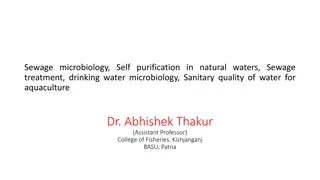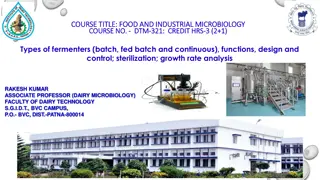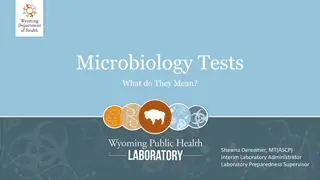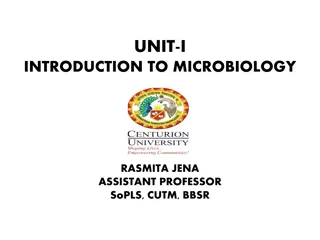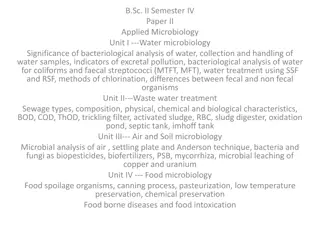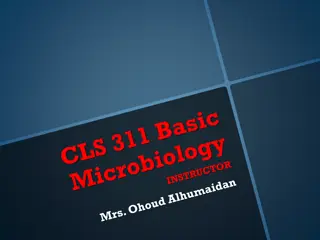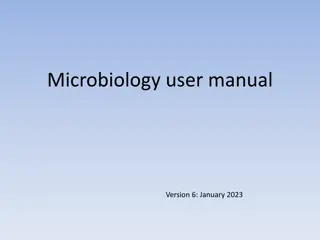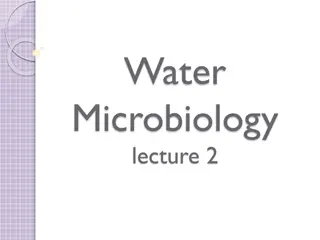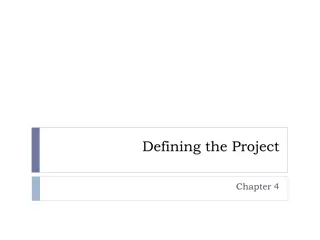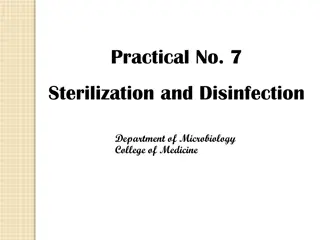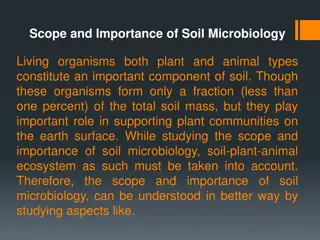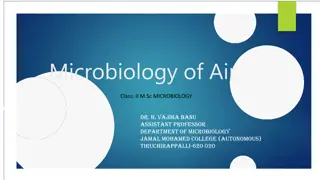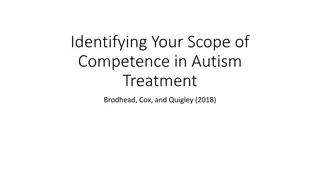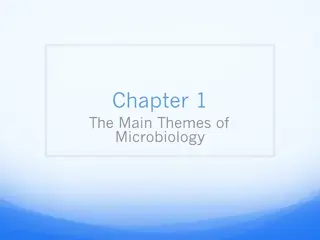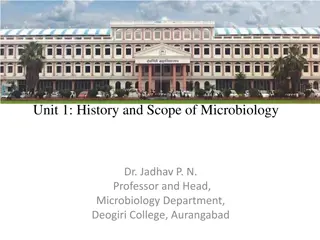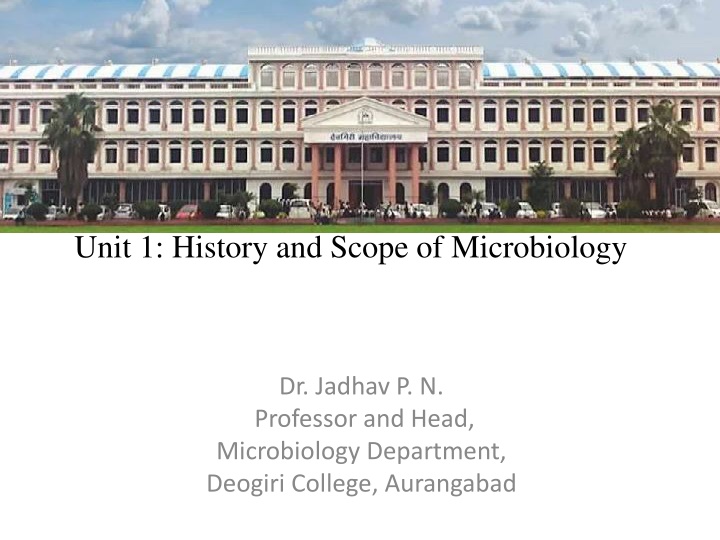
Exploring Microbiology: History, Types, and Scope with Notable Discoveries
Uncover the realm of microbiology with insights on its history, various types of microorganisms, and the diverse scope in fields such as medical, food, public health, industrial, and agricultural microbiology. Discover early observations by pioneers like Robert Hooke and Antony van Leeuwenhoek, who laid the foundation for understanding microbial life.
Download Presentation

Please find below an Image/Link to download the presentation.
The content on the website is provided AS IS for your information and personal use only. It may not be sold, licensed, or shared on other websites without obtaining consent from the author. If you encounter any issues during the download, it is possible that the publisher has removed the file from their server.
You are allowed to download the files provided on this website for personal or commercial use, subject to the condition that they are used lawfully. All files are the property of their respective owners.
The content on the website is provided AS IS for your information and personal use only. It may not be sold, licensed, or shared on other websites without obtaining consent from the author.
E N D
Presentation Transcript
B. Sc. First Year Semester I Paper I Fundamentals of Microbiology Unit 1: History and Scope of Microbiology Dr. Jadhav P. N. Professor and Head, Microbiology Department, Deogiri College, Aurangabad
B. Sc. First Year Semester I Paper I- Fundamentals of Microbiology Unit 1: History and Scope of Microbiology Dr. Jadhav P. N. Professor and Head, Microbiology Department, Deogiri College, Aurangabad
Definition and Concepts Microbiology is the study of microorganisms usually less than 1mm in diameter which requires some form of magnification ( Microscope) to be seen clearly Examples: Viruses Bacteria Fungi Algae Protozoa's
ii) Types of microorganisms: Microbiology studies these specific types of organisms: Virology - viruses Bacteriology - bacteria Phycology - algae Mycology - fungi Protozoology - protozoa
Scope of Microbiology: Microbiologists may have more applied focus on: Medical microbiology, including immunology Food and Dairy microbiology Public Health microbiology (Epidemiology) Industrial microbiology Agricultural microbiology
Various characteristics of microorganisms : Microbial morphology Microbial cytology Microbial physiology Microbial ecology Microbial genetics and molecular biology Microbial taxonomy
Early observation of microorganisms: ROBERT HOOKE One of the most important discoveries of biology occurred in 1665, with the help of a crude microscope, when Robert Hooke stated that life s smallest structural units were cells.
ANTONY VAN LEEUWENHOEK First to observe living microbes His single-lens magnified 50-300X magnification Between 1674-1723 he wrote series of papers describing his observations of bacteria, algae, protozoa, and fungi (Animalcules)
Spontaneous Generation Conflict: Contribution of Scientists Early belief that some forms of life could arise from vital forces present in nonliving or decomposing abiogenesis. In other words, organisms can arise form non-living matter. matter,
LOUIS JABLOT In 1670 Jablot conducted an experiment in which he divided a hay infusion that had been boiled into two containers: a heated container that was closed to the air and a heated container that was freely open to the air. Only the open vessel developed microorganisms. This further helped to disprove abiogenesis.
REDIS and JABLOTS Experiments
Disproved by Schwann, Friedrich Schroder and von Dusch (1830s) Air allowed to enter flask but only after passing through a heated tube or sterile wool John Tyndall (1820-1893) Omission of dust no growth. Demonstrated heat resistant forms of bacteria (endospores)
LOUIS PASTEUR (1822 - 1895) Disproved spontaneous generation of microbes by preventing dust particles from reaching the sterile broth. In 1861 completes experiments that lays to rest spontaneous generation. Showed microbes caused fermentation and spoilage
PASTEURS EXPERIMENT Trapped airborne organisms in cotton; he also heated the necks of flasks, drawing them out into long curves, sterilized the media, and left the flasks open to the air. In this way Pasteur disproved the theory of spontaneous generation


